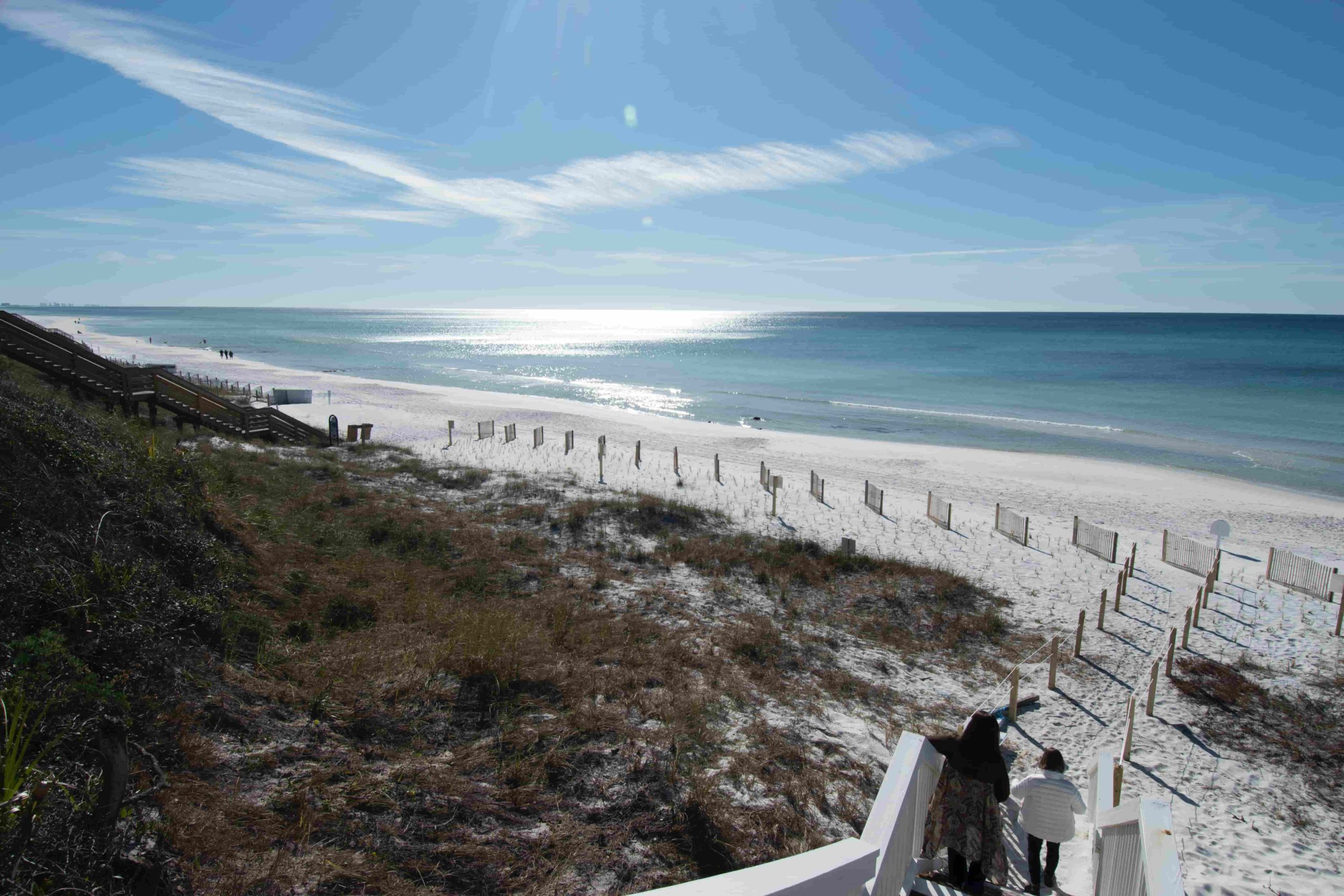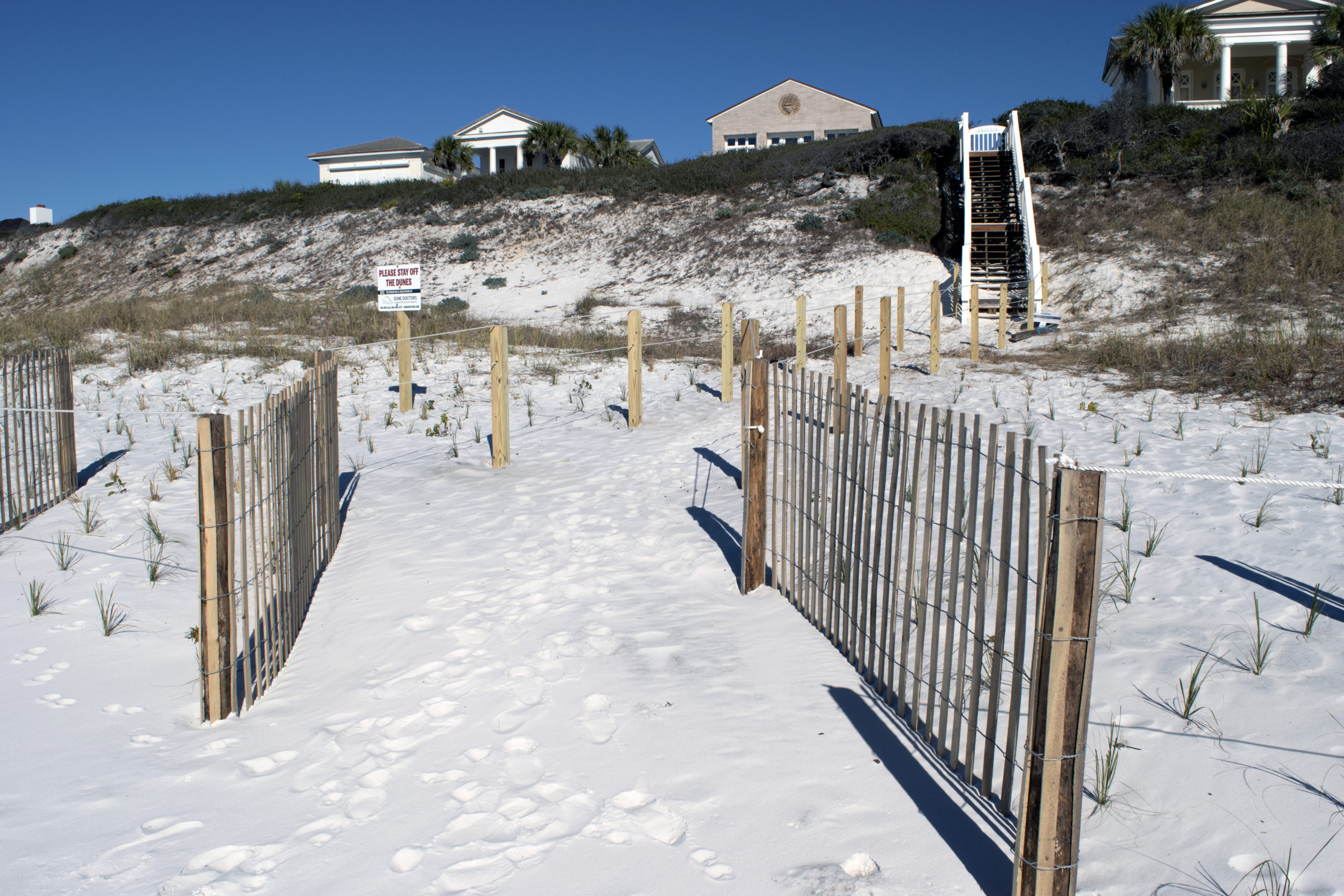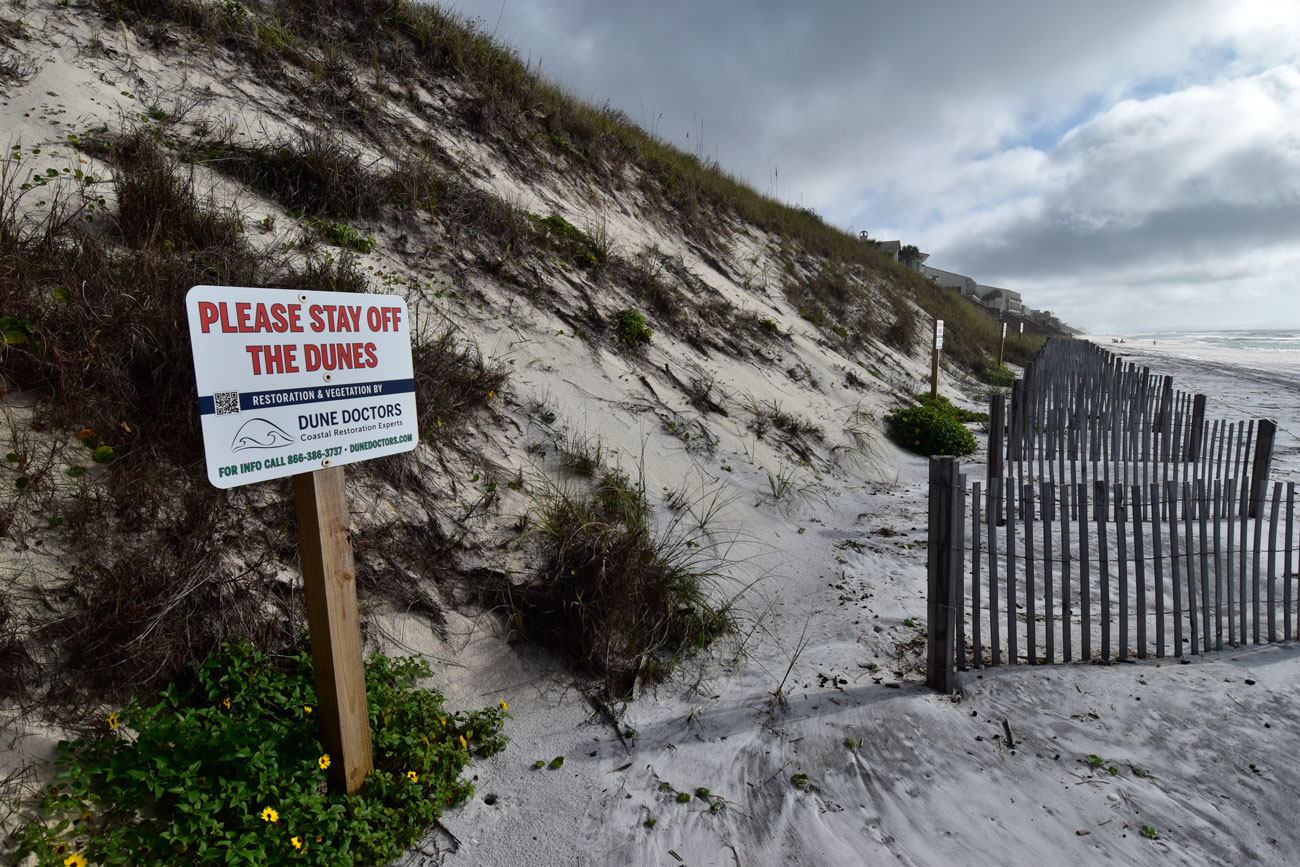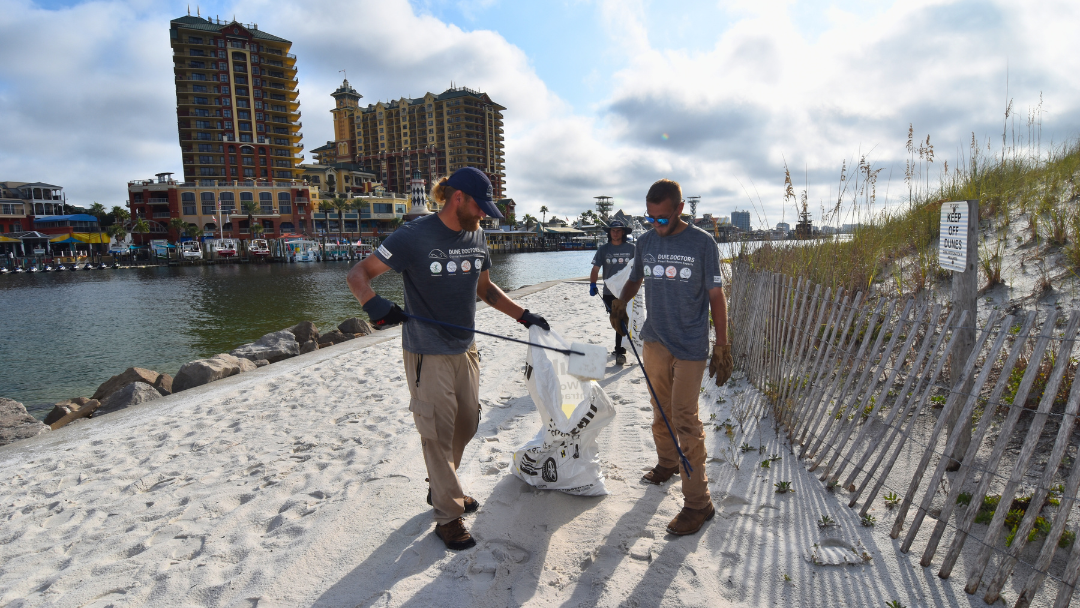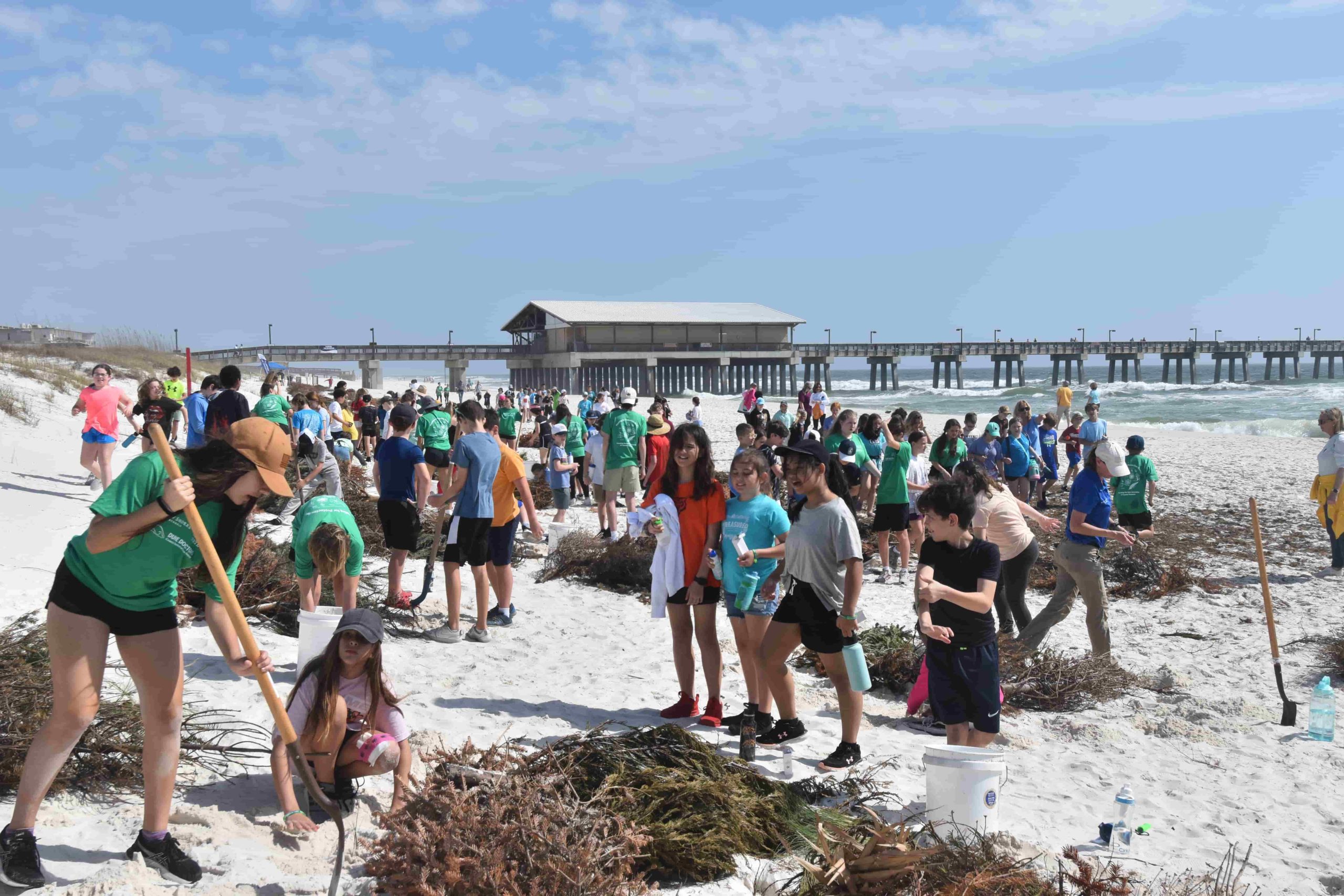Dunes Are Your Greatest Storm-Preparedness Asset
In the past decade and a half, thousands of coastal properties have invested in sand fencing and native vegetation to build up new sand barriers seaward of their established dunes and boardwalk. Many of those sand barriers have since developed into impressive protective berms that are stabilized by native vegetation. However, unlike dunes that lie below a boardwalk, the berms that exist seaward of the steps are often aggressively eroded by foot traffic. As a result, the native vegetation growing on these dunes are frequently trampled and weakened if not killed entirely. When a dune loses a significant portion of its plants, the integrity of its structure is compromised and enters a heightened state of erosion. Dune-building plants are the only force working to stabilize berms in a dynamic environment where wind, storms, and tidal waves actively erode them. With this in mind, a wise coastal property should take proactive steps to minimize the man-made threats disrupting their dune ecosystem.
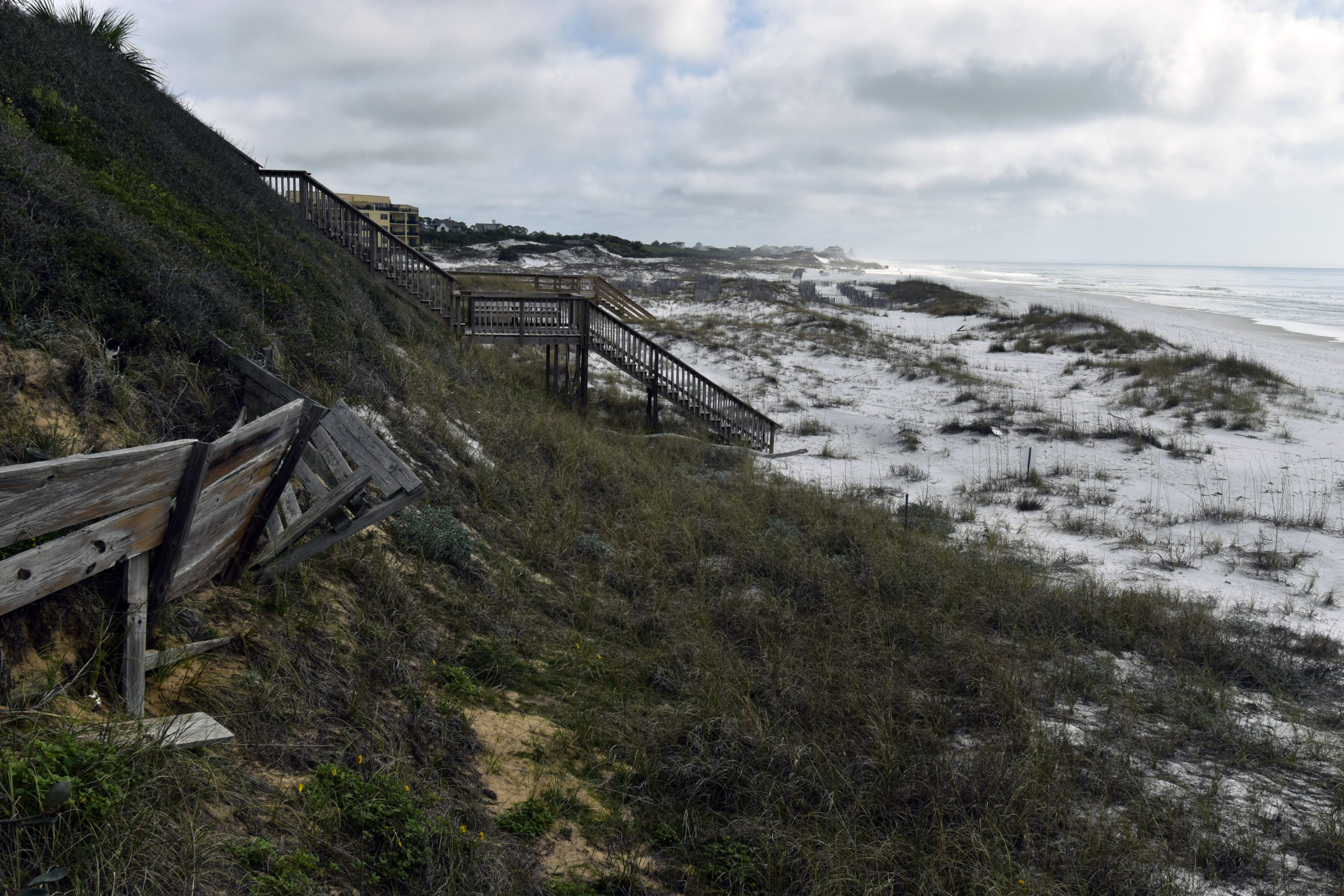
Healthy Coastal Plants May Withstand a Storm but not Foot Traffic
The reason why these tough plants can withstand powerful storms but not trampling lies at the base of their structure. Dune-building plants such as Uniola paniculata (sea oats) and Ammophila Breviligulata (American beach grass) rely on a unique stem to colonize the dune. This stem (called a rhizome) extends horizontally and has nodes that will grow roots once the wind buries them. If successful, new shoots may develop from the nodes resulting in a string of interconnected plants. In the image below, you can see that this eroded dune exposed a rhizome with 7 new plants growing from its nodes.
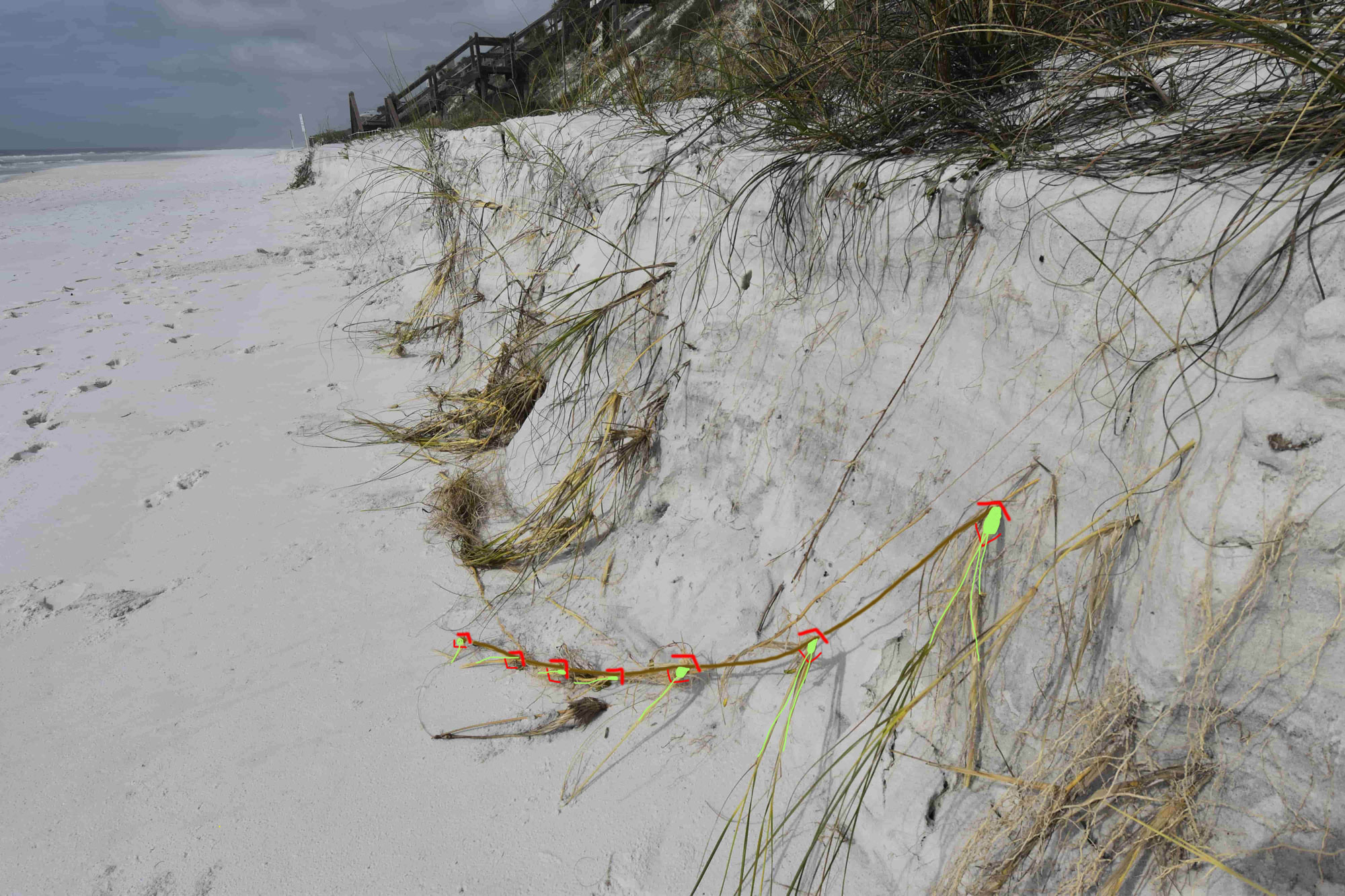
Despite these impressive characteristics, these stems can easily snap when stepped on. If you observe a path that cuts through a dune, you will notice no plants grow on the trail. With daily foot traffic beating down the plants and eroding the dune, a depression slowly forms in the structure creating an access for storm surge to breach the protective berm. At that point, not only may the water easily reach the property at the other end of the path, but the storm will also widen and deepen the depression, creating a costly blow-out zone that will be difficult to repair.
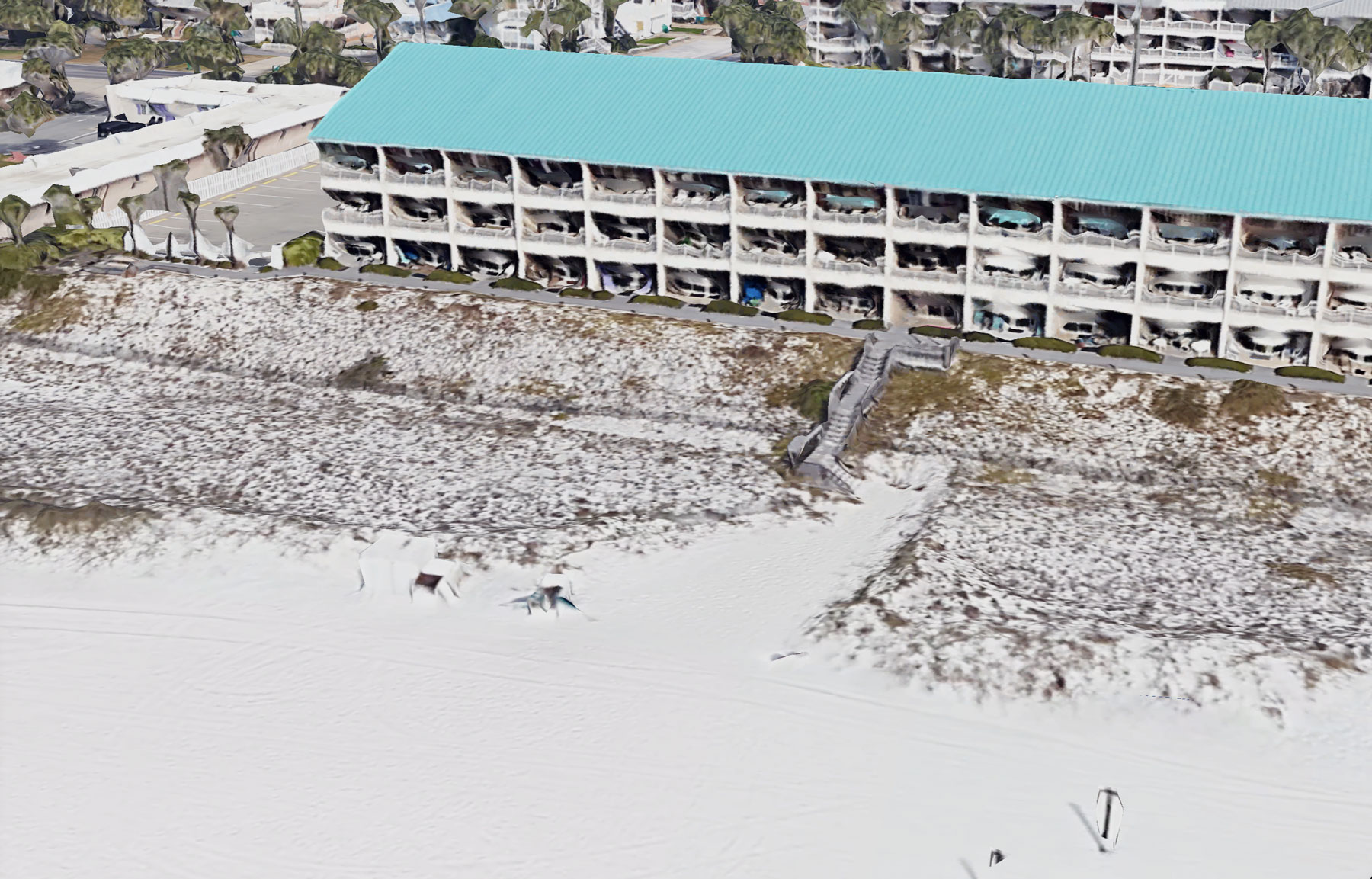
Above is a 3D image generated by google maps that shows the trough and funnel generated by extensive foot traffic at Crystal Sands in Destin, FL. The dune has progressed past the boardwalk, and without a clearly demarcated pathway, daily foot traffic has created a wide depression.
4 Proactive Steps to Help Minimize Man-Made Threats to your New Berm
Bearing that in mind, plants are the only active stabilizing force that holds your sand in place, so here are 4 proactive steps to protect your plants from foot traffic damage.
1. Minimize foot-traffic erosion by delineating a pathway with posts and rope from the boardwalk to the beach.
2. Educate others to avoid walking on the dune by explaining how foot traffic can break delicate plant stems.
3. Invest in signs that discourage beachgoers from walking on the dunes. 
4. When time has come to replace an aging boardwalk, consider the seaward progress your dunes have made. Protect your new berm by extending your new boardwalk to end south of the existing vegetation line.
Boardwalk Regulations Are Designed to Protect Dunes
In all states, boardwalk regulations are in place to minimize disruption to dune ecosystems. The main function of the boardwalk is to protect the delicate berms it arches over more so than providing a comfortable access to the beach. In Florida, for example, the Department of Environmental Protection (DEP) has specific boardwalk regulations for its coastline. The DEP mandates that single-family dwelling walkovers not exceed 4 feet in overall width and the posts not be greater than 4 inches wide. As for multiple-family dwellings, the boardwalk can be up to 6 feet wide with 6-inch posts. As for length, the DEP says the boardwalk cannot go further seaward than 10 feet past the current vegetation line and cannot be more than 30 inches above vegetation. Finally, the boardwalk must be perpendicular to the water not parallel. In order to perform any kind of boardwalk construction or maintenance in Florida, a permit from the DEP is required. Dune Doctors works with boardwalk architects to achieve designs that are optimized for dune growth and can coordinate the necessary permitting to carry out your project.
Foot Traffic Erosion is Costly
Crystal Sands in Destin, Florida is addressing their extensive erosion with a three-fold solution. First, they are bringing in sand approved by Florida DEP to fill the depression caused by foot traffic. Second, Dune Doctors is installing healthy vegetation to stabilize the newly placed sand. Third, Crystal Sands is extending their boardwalk, so people no longer have to walk through the dune to access the beach. The image below depicts the architects’ blueprint for the boardwalk extension at Crystal Sands. The rectangle to the right of the red section on the dune is where the boardwalk currently ends. The red section is the amount of sand necessary to repair the dune’s depression.
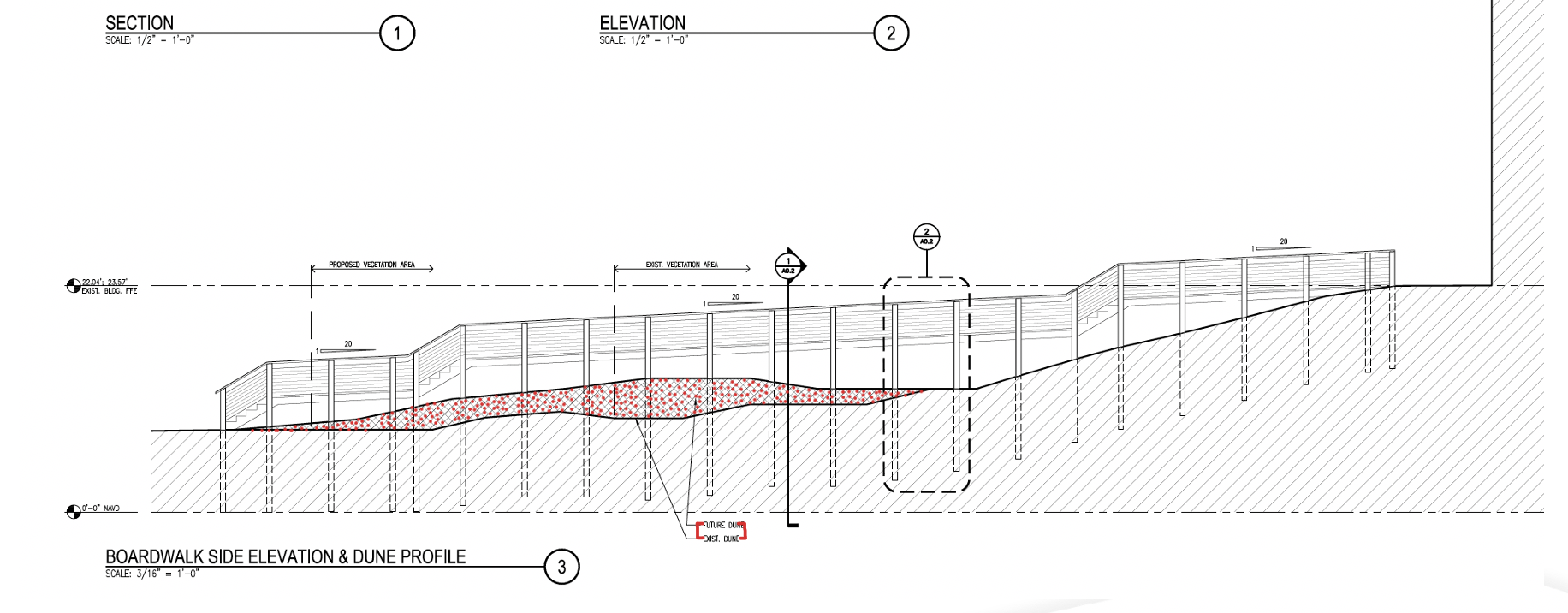
Many beachgoers do not understand how vulnerable and necessary dune ecosystems are, and therefore, it is important to take active measures that prevent people from unintentionally damaging your protective berm. Dune Doctors can help protect your developing berms with signage and by obtaining the permitting and carrying out the construction and maintenance necessary to create an environment conducive for sand accretion.
